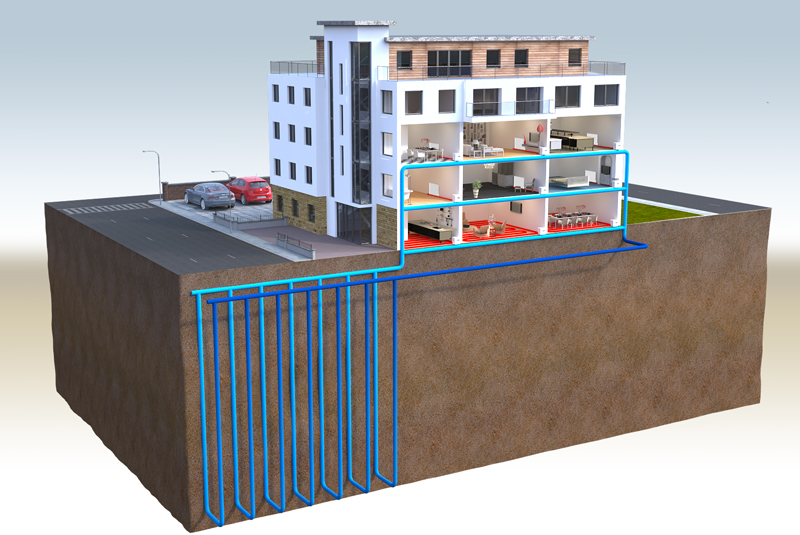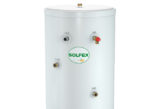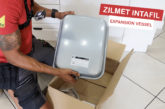
A new animation produced by Kensa Heat Pumps aims to educate the owners and developers of the tens of thousands of high rise flats in the UK to the solution posed by retrofitting district ground source heat pumps.
With the majority of high rise tower blocks in the UK featuring uncontrollable storage radiators for heating, the short film by Kensa demonstrates the ease of replacing this and other types of electric heating with district ground source heat pumps. Addressing the key stages of a retrofit installation, the film depicts the drilling of shared ground loop borehole arrays, which when connected to individual Kensa Shoebox ground source heat pumps in each flat qualify the upgrade for 20 years of income via the Non Domestic Renewable Heat Incentive (RHI).
Dr Matthew Trewhella, Contracting Director at Kensa Heat Pumps, who is currently overseeing a number of tower block upgrades including England’s largest district heating ground source heat pump scheme in the London Borough of Enfield, says: “We are frequently asked how our system design – a Kensa Shoebox heat pump fitted inside each flat and fed by pipework connected to a communal borehole array – can maintain pressure and flow in high rises; our clients are amazed when they realise the depths the borehole pipework reach in comparison to the height of the tower block – 120 to 200 meters – and soon appreciate that the height of the high rise is of no real barrier! Our new animation neatly demonstrates this scale of work, and also debunks many myths, including the requirement for lots of exterior space for ground arrays.”
By bypassing the need for a central plant, the collective power of circulation pumps inside each ground source heat pump in each household move the fluid around the shared ground loop, ensuring sufficient pressure and flow are always maintained throughout the system.
Traditionally flats posed particular challenges for the installation of ground source heat pumps including lack of space and access issues, pipework distribution problems, and the potential for noise disruption in a small living space.
Dr Trewhella continues: “Our solution overcomes the much-publicised drawbacks of conventional district heating schemes in flats featuring large central plant, which require costly insulated pipes to protect the heat as it is circulated away from the source, large billing overhead costs, system operating costs and maintenance for the energy supplier. All of these can result high bills on householders who have no opportunity to select an alternative heat supplier.
“By contrast, in Kensa’s recommended model where a small and quiet Kensa Shoebox ground source heat pump is fitted inside each property, heat is only generated close to the point of use, the fluid circulating around the distribution pipework is at ambient temperature, reducing the installation cost, and most importantly, householders can source electricity to run their heat pumps from their own preferred energy company, switching as required to secure the most competitive tariff.”
The animation, ‘District Ground Source Heat Pumps Installation In Tower Blocks’, can be viewed above and here: https://www.kensaheatpumps.com/district-ground-source-heat-pumps-installation-in-tower-blocks/













